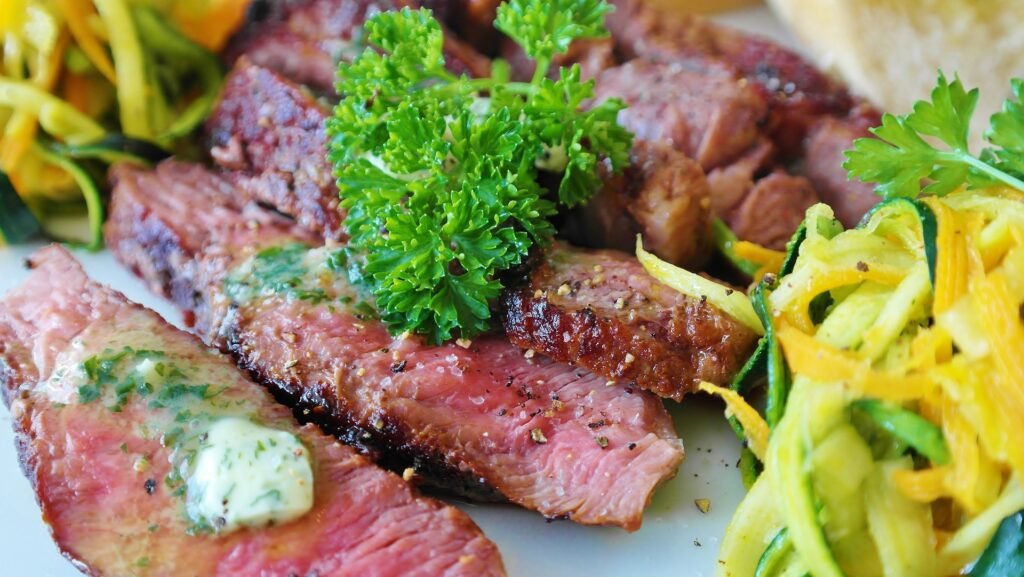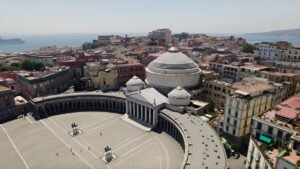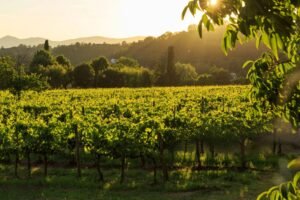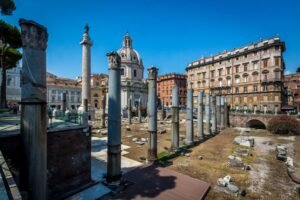Florence travel guide | Discover the top picks with personal experience

Table of Contents
I’ve come to Florence, the capital city of the Tuscany region in Italy. I truly feel that if you haven’t been to Florence, you haven’t truly experienced Italy. This city is the birthplace of one of the most important periods in modern human history: the Renaissance. This was a time of immense flourishing in the arts, intellectual pursuits, and sciences like philosophy and science itself, effectively pulling Europe out of the Dark Ages.
i will try to best Florence travel guide. There are countless places in Florence where you can admire incredible artwork and architecture from this period. Household names like Michelangelo, Leonardo da Vinci, and Botticelli all hail from Florence.
Of course, an art boom like this couldn’t happen without significant wealth, and that’s where the famous Medici family comes into play. They are a household name here in Florence—a family of incredibly wealthy bankers who ruled over several generations. They governed from a number of magnificent palaces.
So, let’s start with Florence travel guide and best tips for your first trip in Florence.
Renaissance art haven
I’m heading to their very first palace, the Riccardi Medici Palace, and I’m sure it will be full of incredible artwork. The Medici family funded much of the remarkable art that you see throughout the city today, created by many of the famous artists of the Renaissance. This is the courtyard of the Riccardi Medici Palace. It’s adorned with stunning classical statues and truly showcases how, during the Renaissance, art was often commissioned purely for art’s sake.
The wealthy elite commissioned art to enjoy, not just to tell Bible stories or glorify kings. In the Middle Ages, much of the art was linked to religion, but suddenly, families like the Medici began commissioning art purely for their pleasure. This inner courtyard is absolutely beautiful, characterized by its columns, arches, and statues. You can almost imagine the Medici family here, so wealthy and powerful that they had a teenage Michelangelo living with them, almost as an adopted son.
Palaces like this are true Renaissance gems, where you can immerse yourself in the incredible art and architecture of that era. The rooms of the palace are stunning, filled with beautiful sculptures and paintings, but no room is more impressive than the Medici family chapel, which was frescoed by Benozzo Gozzoli. I’m going to take a closer look.
The exuberantly frescoed family chapel paints a vivid picture of aristocratic Florence at the height of the Renaissance. The walls depict the Journey of the Magi or the Three Kings traveling to Bethlehem, painted by Benozzo Gozzoli. Lorenzo the Magnificent of the Medici family is idealized as one of the Three Kings, leading a parade of Florentines. Instead of the Holy Land as the background, the scene shows the Tuscan landscape, reflecting the Renaissance shift towards realism.
As powerful and wealthy as the Medici were, they were mortal, just like the rest of us. Eventually, they found their final resting place down the road at San Lorenzo in La Cripta Grande.
The Medici Chapel was designed by none other than Michelangelo at the height of his creative career. Michelangelo personally knew three or four members of the Medici family buried here, making this project both emotional and professional for him. The sculptures of Lorenzo the Magnificent and his nephew Giuliano are depicted as Roman emperors. Lorenzo is shown with his arm resting on a Medici money box, his head bowed in contemplation. Above the tombs, the allegories of time are represented through sculptures depicting Day and Night and Dawn and Dusk.
Piazza della Signoria
At Giuliano’s feet, Night, a giantess, twists in uneasy slumber, while Day, a Herculean figure, gazes wrathfully over his shoulder.
This is Piazza della Signoria, the main square in Florence, dominated by the Palazzo Vecchio, or the Old Palace. Its medieval facade reflects its origins, as it was built in the 1200s to house Florence’s elected officials during the city’s time as a republic. When the Medici family rose to power, they moved into this palace, making it their second residence after the Riccardi Medici Palace we visited earlier.
The square is adorned with many statues from the Renaissance era, most commissioned by the Medici family. One of the most remarkable monuments in this piazza is the Fountain of Neptune, the first public fountain in Florence. What’s fascinating is that the face of Neptune, the god of the sea, bears a striking resemblance to the statue of Cosimo I de’ Medici, which stands nearby.
The Fountain of Neptune, located in Piazza della Signoria, features Neptune on a horse. What’s amusing is that the Medici family often had their likeness sculpted or painted onto godlike figures, reflecting their egos and their desire to elevate themselves to divine status.
The most famous statue in the square is Michelangelo’s David, located right outside the Palazzo Vecchio. However, this is a replica. If you want to see the original statue, check out my YouTube memberships, where I share bonus footage from my trips. I can’t include everything in my main blog, but this exclusive content is well worth it. The original David is one of Michelangelo’s most celebrated works.
The statue depicts David from the Bible, completely nude. During the Renaissance, there was a significant shift toward humanism, celebrating mankind rather than focusing solely on God. This change is why many Renaissance sculptures and artworks depict men and women in their naked forms, honoring the human body as a masterpiece.
Right next to the Palazzo Vecchio were the Medici offices, known as the Uffizi in Italian. This is where they worked, and today it houses the Uffizi Gallery, one of the most renowned art collections in Italy and the world. The gallery offers a journey through art history, featuring works from the medieval period to the modern era. Its collection spans centuries, from the 12th to the 17th and 18th centuries.
One particularly impressive room in the Uffizi Gallery is lined with classical statues, showcasing the foundation of Renaissance art. Renaissance sculptors and painters drew inspiration from ancient art, particularly Greek and Roman works. For the wealthy families of the time, having such statues in their gardens symbolized the epitome of culture and sophistication.
Renaissance art and flavors
The revival of the beauty of the human body is a strong foundation of Renaissance art, reflecting the glory of God in the order, harmony, and perfection of His greatest creation—the human body. Florence is truly stunning. The city is filled with breathtaking art and architecture, and everywhere you look, you’ll find something photo-worthy. It’s hard to resist capturing it all.
Sandro Botticelli’s Birth of Venus is the purest expression of Renaissance beauty. The composition depicts the goddess of love and beauty arriving on land. Botticelli draws inspiration from classical statues for Venus’s modest pose, as she covers her nakedness with her flowing blonde hair. She stands gracefully on a giant scallop shell, as pure and perfect as a pearl. The delicate roses blowing in the wind are a gentle reminder of spring.
Okay, so I’ve just picked up two classic Tuscan street foods for lunch, and I’m absolutely starving! First, I got myself a panino sandwich made with the famous schiacciata bread here in Tuscany. Schiacciata is like a chewier, flatter version of focaccia. Then, I went for the lampredotto panino, a sandwich made with lampredotto—a part of a cow’s stomach. This is a popular Tuscan street food, and it’s cooked in a flavorful broth of vegetables and herbs, using only the freshest ingredients.
First, I’m going to try the panino. Wow, it’s absolutely amazing! The bread is fresh and chewy, reminding me a lot of focaccia but with a unique texture. It’s incredibly delicious—honestly, wow.
Now for the lampredotto. I’ll admit, I’m a little nervous to try it. You can see the thinly sliced pieces of cow stomach, paired with the tangy salsa verde inside. It definitely has some spice to it! The meat is soft and tender, and the salsa verde adds a punchy tanginess that makes it even tastier. Both are incredibly authentic Tuscan street food options—delicious in their own unique ways.
From this spot, you get an incredible view of the famous Ponte Vecchio, which translates to “Old Bridge” in Italian. The bridge stands on the site of an ancient Roman bridge and was completed around 1350, dating back to the medieval period. It’s absolutely stunning and holds a unique place in history as it was spared from bombing during World War II, even though much of Florence was heavily bombed by the Nazis.
Ponte Vecchio charm
The Ponte Vecchio connects the Uffizi Galleries—formerly the offices of the powerful Medici family—with their later residence, the Pitti Palace, which is located across the river. To make their commute more private and secure, the Medici family commissioned the construction of a passageway that runs along the top of the Ponte Vecchio. This passageway, known as the Vasari Corridor, was designed by the artist and architect Giorgio Vasari. It allowed the Medici to move between their offices and their palace without having to mix with the public.
When the bridge was first built, the government rented out space to the Butchers’ Guild to help recover construction costs. This arrangement was convenient for the butchers, as they could easily dispose of waste by throwing it directly into the river below. However, once the Medici family began using the bridge for their personal use, they wanted a more refined environment. When the butchers’ contract ended, the Medici replaced them with the Goldsmiths’ Guild, elevating the bridge’s reputation.
To this day, the Ponte Vecchio remains a hub for goldsmiths and jewelers, preserving its luxurious and historic charm.
The shops lining the Ponte Vecchio are mostly goldsmiths and jewelers, maintaining the bridge’s legacy as a hub for luxury goods. This area, on the other side of the Arno River, is known as the Oltrarno District. It’s home to many artisan shops, as Florence is renowned for its long history of craftsmanship. The city’s wealth and economic boom during the Middle Ages were largely fueled by industries like wool and leather production. The river helped with the transportation of these goods across the world.
In addition to its historical significance, the Oltrarno District is a beautiful area to explore. The medieval streets here are far less crowded than the bustling tourist spots in central Florence, offering a more relaxed experience.
Boboli Gardens oasis
The Boboli Gardens were originally the gardens of the Pitti Palace, which served as the third residence of the powerful Medici family. The Medici commissioned the gardens’ design, and they remain in their original layout. As you wander through, you’ll encounter numerous ancient and Renaissance statues scattered throughout the vast grounds. The gardens’ design became a model for the Italian Garden style and inspired many European courts and palaces.
Strolling through this tranquil space is a peaceful and beautiful experience, and you’ll find Renaissance-style fountains, like the Fountain of Neptune and the Fountain of the Ocean, as well as ornate decorations fit for royalty.
What’s great is that the ticket to the Boboli Gardens also gives you access to the Bardini Gardens, another stunning green space to explore in Florence. These are beautiful! I’ve just been having a stroll through, and there’s lots of gorgeous greenery, plants, and trees. The best thing about these gardens, though, is the view. From up here, you get incredible views over the city of Florence, and you can see the tops of all the famous monuments like the Duomo, the churches, and the Palazzos. It’s stunning, especially now that the sun is setting. It is a great place to come and a lot less crowded than the Piazzale Michelangelo, which is right next to it. So, it’s a little bit of a hidden gem, I’d say, but very beautiful.
Florentine steak delight

I am very excited for my dinner tonight. I’ve come to a Florentine steakhouse. Anybody who knows about Tuscany and Florence will know that the meat here is top quality, especially the Chianina beef, which is from the Chianti region. I’m very, very excited for it and looking forward to it because I’m absolutely starving after a day of exploring all of the museums and art galleries.
Oh wow, okay, so this is a 1-kilogram Chianina. Okay, fantastic, looks very good.
Thank you, ma’am. Okay, well, it should be done well…rare. Wow, that looks like a lot of work, but that’s the minimum weight they do here, 1 kilogram of beef, which is amazing. And like she said, it’s known as a Fiorentina steak. Wow, that looks amazing! Thank you so much. One more glass of the Chianti, please.
Right, the same wine? Yes, please. Wow, this looks incredible! A whole kilogram of Chianina beef—looks beautiful. The way to eat it here is pretty much raw and pink in the middle, only with a bit of salt and pepper.
Olive oil, nothing else—that is the way to do it. You just need very simple sides: some roast potatoes and some spinach. It is so delicious! Honestly, the quality of the beef is outstanding. It’s juicy, salty, and succulent. I’m a massive meat lover, so I am in heaven. This meal has been absolutely beautiful. Chianina beef is gorgeous, especially when you pair it with wine from the Chianti region. Tuscany food and wine—it’s just…wow, outstanding quality!
This is Florence’s Duomo, Italian for Cathedral, and it is its crown and glory, quite rightly so. Its bell tower and dome can be seen from all around the city. It was the largest anywhere in the world when it was finished in the 15th century. The dome was the first of the Renaissance and the first grand dome to be built in Europe in over 1,000 years. It was in 1420 that Filippo Brunelleschi won a competition to build the dome, which essentially kicked off the architectural Renaissance.
Brunelleschi’s dome inspired those that followed, like the Vatican and the U.S. Capitol, and it really showed how, if you combined art and science, you could create beauty—something that was very typical of the Renaissance era.
Florence’s historic piazzas
The façade of the cathedral is Gothic in style because it was started before the Renaissance came about, but the statues on the façade of the cathedral and the bell tower are very Renaissance. You’ve got a statue of Mary and Jesus and the 12 disciples on the façade of the Duomo.
You also have statues of some of the great Renaissance artists like Michelangelo and Leonardo da Vinci on the bell tower. I think it’s absolutely breathtaking. It’s beautiful, and the whole façade is made of green, white, and red marble. It’s such a unique building here in Florence.
This is another one of the beautiful piazzas in Florence, and it’s called Piazza della Repubblica. It has very ancient roots. The column in the middle of the piazza and the statue on top serve as a reminder that it was actually a Roman forum over 2,000 years ago. Florence was an ancient Roman city, but it’s also a piazza, which tells a lot about the modern history of Florence. The huge arch was built in honor and celebration of the unification of Italy in the 19th century, and that also explains the name of this piazza: Piazza della Repubblica. So, it’s just a really nice place now to have a drink, coffee, people-watch, and admire these beautiful grand 19th-century buildings.
So, this is a very unique way to have an aperitivo here in Florence, and it’s only in the city that you can find the wine windows, which is where I just ordered a glass of wine. I always thought they looked very touristy and Instagram-friendly for photos, and my impression was that it was a very touristic thing. But it actually has quite an interesting story and a lot of history behind it because these wine windows were first created in the 16th century, when lots of wealthy aristocratic families with vineyards in the Tuscan countryside wanted to sell their wine directly to the public from their homes.
of course, none other than the Medici made it possible for them to do so through these wine windows. So it’s pretty cool, and there are still a few left open now. A lot of them have closed, but I think it’s quite an interesting concept, and it’s certainly something very unique.
This is my last evening here in Florence, and I’ve really enjoyed my time in this city. Before I came here, I didn’t really have a full grasp of the meaning of the Renaissance, but it’s obviously a word that’s used a lot in connection with Florence because this is where the Renaissance was born.
exploring the city over the past few days, I’ve realized it was a movement that had a lot of influence on the way we live our lives today in the modern day. It was a shift away from just religion and God towards humanism and expressing your creativity.
Thank you, and that wraps up our Florence travel guide | Discover the top picks with personal experience. Do you agree with the places we chose, or is there somewhere you visited that you feel should be on the list? leave us a comment.
You can find me on Instagram: @dreamytravelersofficial/.








